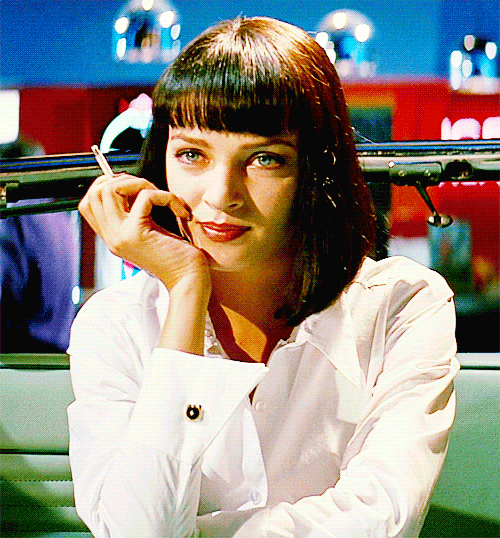

“Quentin wanted to show their world, and the reality of their world, and he had to go where that was,” says Craft. Brett’s apartment (demolished by the 1994 Northridge earthquake) was penned to be in Hollywood, young Butch’s house in Alhambra, and Jimmie’s house in Toluca Lake. When pinpointing all of Pulp Fiction’s 20-plus locations on a map, the array represents a cross-section of Los Angeles neighborhoods from the South Bay to the Valley, many of which were written into Tarantino’s screenplay. David Wasco, left, Sandy Reynolds-Wasco, and Bob Craft return to Fosters Freeze with an original Teriyaki Donut sign We all went to great lengths to find interiors or exteriors that allowed for his dialogue to move actors from point A to point B,” says Wasco, who, along with Reynolds-Wasco, also designed Reservoir Dogs, Jackie Brown, Kill Bill: Vols. “The locations have to make his writing work. “There are a lot of directors who don’t do that,” he concludes. Craft’s experience is that Tarantino knows exactly what he wants in a location before he sees it for the first time, a quality that would seem commonplace for any filmmaker. “Quentin, first and foremost, a writer,” says Craft, who also worked on Jackie Brown. (Post-WWII tract housing was faster to construct without basements.) Therefore, the pawnshop basement was built as one in a handful of sets constructed in a Culver City warehouse that also housed Pulp Fiction’s production offices.Ĭraft says that the single most critical aspect to the pawnshop, and every other location featured in Pulp Fiction, was the geography of the space. “There are no basements in the Valley,” says Wasco, generally speaking. Pulp Fiction fans visiting Crown Pawn Shop, which have included entire Lufthansa flight crews on layover, are often disappointed to learn that the infamous backroom of the Mason-Dixon pawnshop, where Marcellus and Butch have an unfortunate run-in with hillbilly storeowner Maynard (Duane Whitaker), redneck security guard Zed (Peter Green), and the leather-clad Gimp, doesn’t exist.

“Not only was it difficult, but I remember scouting things and there was so much security locked into the floors and metal detectors,” says Reynolds-Wasco. “There weren’t that many pawnshops that would let you film,” says Craft.

Tarantino directing Pulp Fiction at Teriyaki Donutsįor the pawnshop in question, supposedly just around the corner from the crash location, Craft cast a wide net across L.A. It was serendipitous that located at the corner of Fletcher and Atwater was the Fosters Freeze that the film’s art department transformed into the scripted Teriyaki Donut, a donut chain also referenced in the food court of the Del Amo Mall in Tarantino’s follow up to Pulp Fiction, Jackie Brown. A quarter of a century later, Tarantino being Tarantino, the filmmaker was able to close a section Hollywood Boulevard for Once Upon a Time in…Hollywood. “Quentin wanted to close down Lankershim, which was never going to happen,” says Craft. This, after Butch retrieved his father’s gold watch-a family heirloom with an incomparable history-from his North Hollywood apartment. crime boss, Marcellus Wallace (Ving Rhames). “The city sent out people to do a traffic flow and figure it all out,” says Craft of the Fletcher-Atwater intersection, which was one of the viable locations for over-the-hill boxer, Butch Coolidge (Bruce Willis), to crash his girlfriend’s Honda into L.A. Miramax Fosters Freeze at Fletcher Drive and Atwater Avenue Butch crashes Fabienne’s Honda in front of Teriyaki Donuts Craft tells us that he needed to find an intersection that could be completely controlled as well as a pawnshop that wasn’t concerned about how it was portrayed. The intersection of Fletcher and Atwater, along with the Crown Pawn Shop in Canoga Park 25 miles away, is a significant onscreen marriage of locations in Quentin Tarantino’s pop-noir masterpiece, Pulp Fiction. It’s a familiar scene for production designer David Wasco, set decorator Sandy Reynolds-Wasco, and location manager Bob Craft as they observe from a blue picnic table across the street at Fosters Freeze. On a balmy September afternoon in Atwater Village, an art department crew takes measurements at an automotive shop at the corner of Fletcher Drive and Atwater Avenue.


 0 kommentar(er)
0 kommentar(er)
